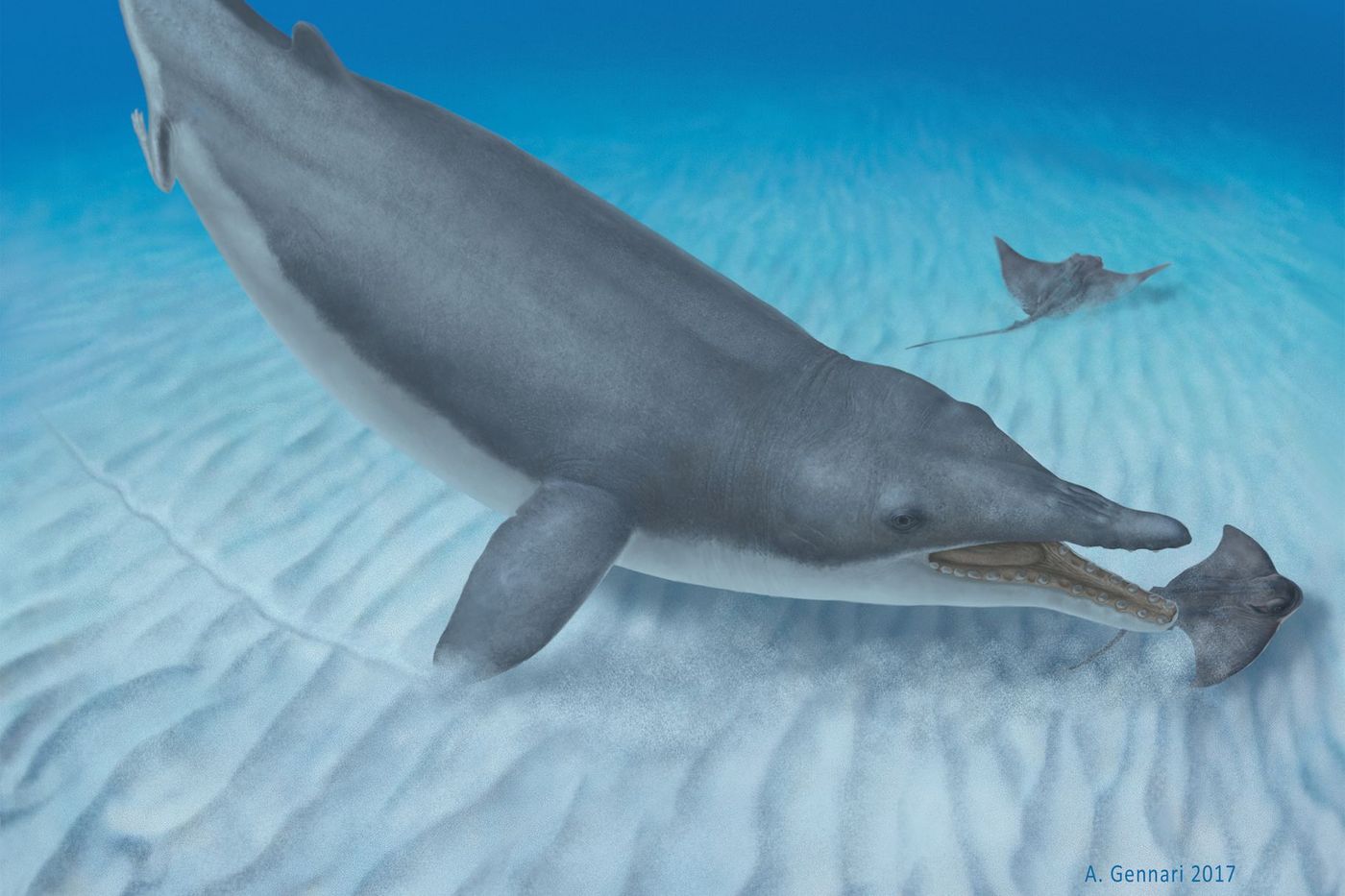This Ancient Whale Species Ate Similarly to Baleen Whales Despite Having Teeth
Given the nature of various whale species today, which have varying appetites ranging from krill to larger fish depending on their dental features, it goes without saying that scientists were surprised to learn how a newly-discovered ancient whale species dubbed Mystacodon selenensis seemed to defy these modern rules.
The newly-discovered ancient whale species was made possible by studying a fossil found in Peru back in 2010. It told the story of a whale that lived anywhere from 23 to 41 million years ago and how it had teeth perfect for hunting fish. Nevertheless, experts say it preferred to be a bottom-feeder instead. The findings appear this week in the journal Current Biology.
Image Credit:
Modern toothed whales typically hunt larger prey because they’re capable of it. For example, killer whales like to munch on fish, giant squid, octopus, sea turtles, sharks, and many other larger creatures. The teeth enable them to grind their food down to be swallowed, and the capability puts them at the top of the aquatic food chain.
Related: Drone footage shows dozens of sharks snacking on a whale
There also exist whale species without typical teeth; blue whales, for example, have several rows of baleen on either side of their jaw instead. This baleen captures smaller prey without chewing on them, including krill and copepods, keeping them from escaping its mouth. They get swallowed whole rather than ground up by teeth, which limits the size of their prey.
That said, while there’s a distinction between dietary behavior between modern toothed and toothless whales, Mystacodon selenensis was certainly a rule-bender of sorts because despite having teeth, it didn’t really hunt larger creatures and gnaw at them like modern toothed whales do.
Related: Humpback whale calves 'whisper' to avoid predation
Mystacodon selenensis was interestingly a part of the same family as baleen whales are today, which makes it the oldest-known ancestor of modern baleen whales and suggests that perhaps it set the groundwork for their evolution. Since they didn’t eat large creatures that needed to be chewed, modern baleen whales likely lost their teeth and adapted to the diet style all thanks to this common ancestor.
While comparing the skull of the ancient whale to that of other species alive today, experts noticed it had a wider snout than modern whales do, which implied that it may have captured the prey it found at the bottom of the sea by using suction. The teeth also had signs of abrasion, which is typical for this kind of lifestyle, as the sand sucked in from the seafloor would have deteriorated the teeth over time like sandpaper would.
More skeletal observations revealed that the ancient species also exhibited evidence of small hind limbs, which were thought to have disappeared from whales much earlier on in history. This evidence suggests that perhaps baleen and toothed whales lost their hind legs at different times in history.
While the ancient remains of Mystacodon selenensis certainly helps to answer a lot of questions about whale evolution, it also brings up so many more that have yet to be answered. To find out more, additional observations of the skeleton are planned and perhaps additional attempts to find more specimens could yield additional data.
Related: Can whales change their environments?
It should be interesting to see what researchers can piece together in future studies.
Source: Nature









